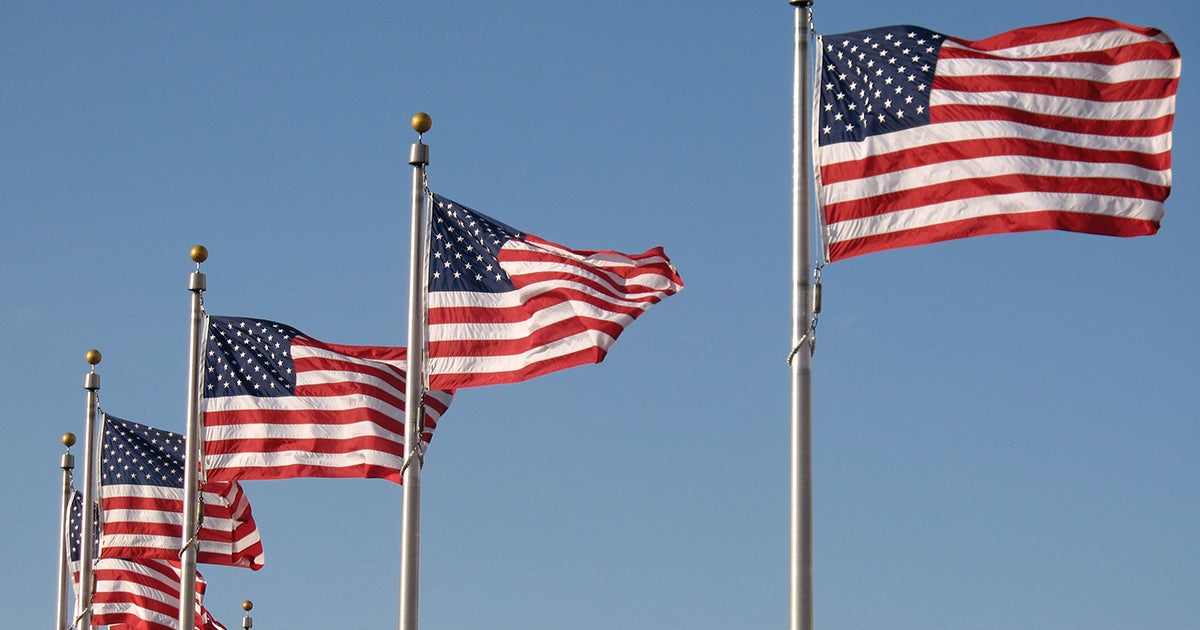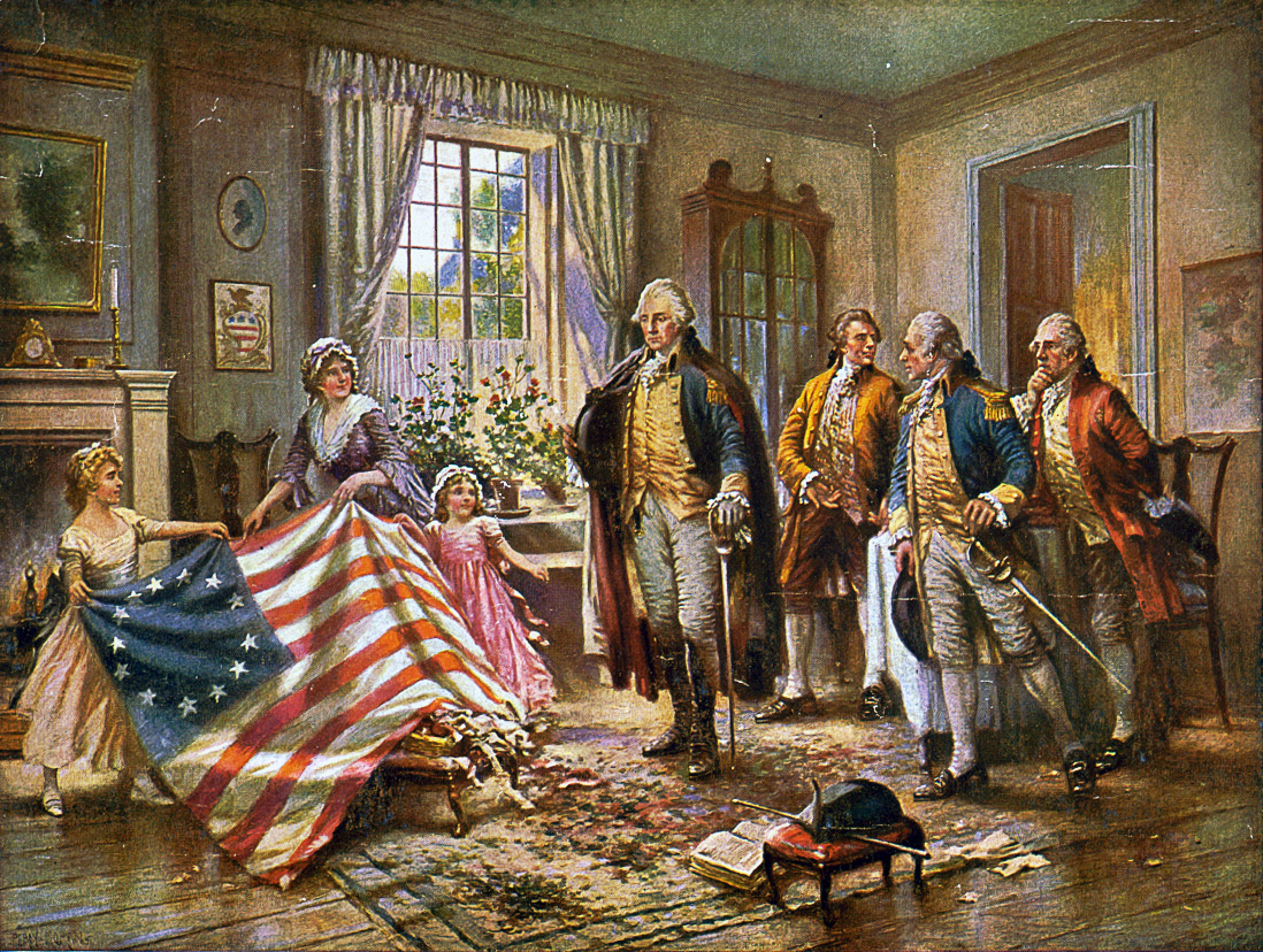
by Logan Tantibanchanchai • 7 min read
Today, June 14, is Flag Day—a time to commemorate the adoption of the U.S. flag.
Though we may disagree on many issues, Flag Day helps us focus on what brings us together as Americans. It’s a day that symbolizes our nation’s fundamental values. We’re reminded of our shared belief in the promise of freedom and the ability to live our lives without fear of coercion or oppression because we have the blessing of living in a pluralistic society.
Flag Day originated in a resolution of the Second Continental Congress on June 14, 1777. However, observance of this national event did receive prominence until many decades later. In 1916, President Woodrow Wilson issued a proclamation that established June 14 as America’s official flag day. In 1949, Congress approved the national observance, and President Harry Truman signed it into law.
The American flag has changed over time to represent the growth of the nation from 13 British colonies to 50 independent states. Life today is very different than it was nearly 250 years ago.
However, at its core, what the American flag represents remains the same. What unites the people of Texas with those in California are the same principles that united the 13 colonies—life, liberty and the pursuit of happiness.
The Star-Spangled Banner and America’s Religious Heritage
When celebrating Flag Day, many Americans overlook or simply don’t know about the deep connection between the flag and our nation’s religious history.
Betsy Ross, widely credited with developing and sewing the first American flag, regularly attended Christ Church in Philadelphia. In fact, Ross and her family sat in a pew not too far from where George and Martha Washington commonly sat.

(The Birth of Old Glory – Courtesy of the Library of Congress | Print shows an interior view of a room with Betsy Ross and two young girls on the left, showing an American flag to George Washington standing at center, and three other men standing on the right, possibly the Hon. George Ross and Robert Morris, and an unidentified military officer.)
What’s more, the Pledge of Allegiance—which honors our country and our flag—was written by Francis Bellamy, a Baptist minister. He composed the first version of the pledge in 1892, which read:
“I pledge allegiance to my Flag and the Republic for which it stands, one nation, indivisible, with liberty and justice for all.”
The wording is slightly different than what we know today. And you may notice something missing: the words “Under God.” Those were added in 1954 under President Eisenhower’s direction.
According to the History Channel, in February of 1954, Eisenhower attended a sermon by Reverend George Docherty at the New York Avenue Presbyterian Church in Washington, D.C. That preacher’s message persuaded Eisenhower to include those two words in the pledge.
On June 14, 1954—70 years ago on this very date—President Eisenhower signed the bill that added “under God” and “one nation” to the pledge. At the bill signing ceremony, he said:
“From this day forward, the millions of our school children will daily proclaim in every city and town, every village and rural school house, the dedication of our nation and our people to the Almighty. To anyone who truly loves America, nothing could be more inspiring than to contemplate this rededication of our youth, on each school morning, to our country’s true meaning…In this way we shall constantly strengthen those spiritual weapons which forever will be our country’s most powerful resource, in peace or in war.”
Our flag is deeply intertwined with religious traditions because America’s history cannot be separated from religion. Today, in an increasingly secular and irreligious society, some may say that we never reached that point. And it is true that America has not been without fault.
Our flag—despite our nation’s imperfections—still represents our highest, most noble aims. It represents a desire to go beyond our base impulses and instead look to attain something higher.
The flag has always been a symbol of freedom. When Union troops fought to free slaves, they carried the American flag. Civil Rights leaders and activists carried the American flag in their marches as a symbol of the very freedoms they were demanding for all. Immigrants arriving on our shores have looked to our flag as a beacon of hope, representing a sort of freedom that you could not find anywhere else in the world.
Despite all the division we see today, there’s hope because Americans still overwhelmingly agree with and believe in our founding principles.
According to an Associated Press poll, 9 in 10 U.S. adults say free speech, the right to vote, the right to equal protection under the law and the right to privacy are extremely important or very important to our national identity.
84% believe that the freedom of religion—the First Freedom listed in the Bill of Rights—is extremely or very important. 83% say the same thing about the right to peacefully assemble, another crucial First Amendment freedom.
Of course, there’s no denying that many of these rights are under attack. And we still have plenty of work to do to make sure we restore, protect and live up to the ideals that our Founders envisioned.
As we celebrate Flag Day and honor our nation’s religious heritage, take a moment to reflect on the words in The Star-Spangled Banner.
Most of us know the melody and words by heart. But did you know that what we sing together is just the first verse? This ode to our flag was written by Francis Scott Key, who was also a lay minister at his church. And there’s a fourth verse, which takes on a profoundly religious tone:
“O thus be it ever when freemen shall stand
Between their lov’d home and the war’s desolation!
Blest with vict’ry and peace may the heav’n rescued land
Praise the power that hath made and preserv’d us a nation!
Then conquer we must, when our cause it is just,
And this be our motto – ‘In God is our trust,’
And the star-spangled banner in triumph shall wave
O’er the land of the free and the home of the brave.”